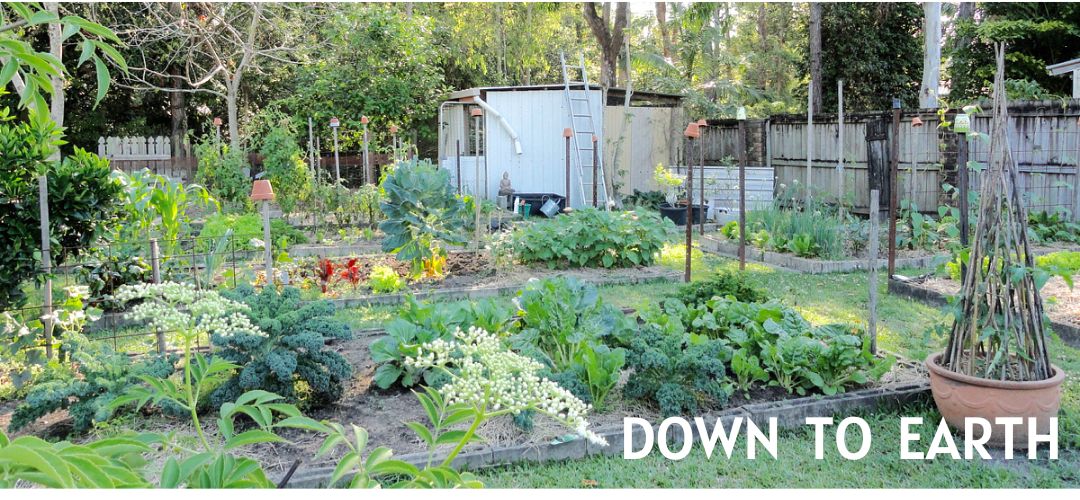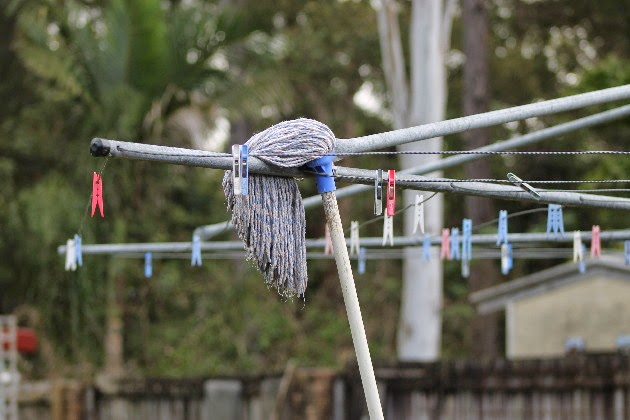There are so many different mops around now. Last time I looked, there were cotton mops, sponge mops, rayon mops, microfibre mops, well, let's just say there are a lot to choose from. Sometimes giving people a big selection is confusing and they don't know what to buy. Recently I had an email asking about mops and what mop was suitable for a tiled floor. It reminded me of another email I received a few months ago asking a similar question about the difference between cotton mops and sponge mops.
We have tiled and floating wood floors here. Over the years I've tried sponge and micro-fibre mops but always come back to my cotton mop. They glide effortlessly across any floor type, they're easy to squeeze the water from, easy to clean and they dry in the sun - which is another way to disinfect a clean mop. I want my mop to clean my floors properly, to be locally made and environmentally friendly. A side consideration is the cost of the mop. When buying a mop, always buy the best quality you can afford, it will last longer. Remember, the best quality doesn't mean the most expensive, although it might be. The best quality cotton mop will be made using natural cotton and it will probably have a replaceable mop head. These heads can be detached for washing in the washing machine if they're really dirty. When the mop head is too stringy, after years of wear, you just replace the head, not the handle. I've had my mop for about ten years and it's still going strong.
You should always use a clean mop. Using a dirty mop will just spread the dirt back onto the floor. You must also sweep or vacuum the floor before mopping. If my floors are fairly clean, I just use a half cup of white vinegar in a bucket of hot water and that cleans the floors very well. If they're dirty, dusty or greasy, I use the vinegar and add a tablespoon of liquid soap or a quarter cup of laundry liquid. Again, this does the job. I don't need to buy a specific floor cleaner, I don't need it for the kind of floors we have here.
So there you have it. Start with a swept or vacuumed floor. Cotton mop, vinegar and a bit of soap or laundry liquid for a heavier job. You'll get a clean floor with little environmental impact and for the most cost effective price. Sure you can go with the steam cleaners, microfibres and man-made cleaning solutions but I doubt they'll do a better job than this low tech option. Remember, it's not just your food that you'll try to source locally. All your product choices should also be environmentally acceptable and frugal.
When you finish mopping the floor, pour out the dirty water in the bucket, fill it with clean water and agitate the mop around in the water. If it's particularly dirty, you may have to wash the cotton head with soap and rinse again, or you can soak it overnight in a solution of oxy-bleach (Napisan) made up according to the instruction on the container. If it needs a thorough clean, detach the mop head and put it through a fast cycle in the washing machine. When you clean the mop head, take it outside and dry it in the sun. I usually have mine over the washing line or upside down, against the fence. When the mop is dry, take it inside again and hang it up so the cotton remains dry and clean until you need to use it again.
Cleaning the floor doesn't have to cost a lot of money, despite what advertisements tells you. A simple cotton mop with vinegar or soap will do the job nicely. As long as you start with a clean mop, you should get a clean floor every time. I'd be interested in reading some of your green cleaning methods for your floors, particularly if you have an old or new wood floor or a vinyl floor. What mops are you using and how do you clean them?

